Liverpool’s signings in the 2019 summer transfer window were seen as underwhelming by most fans. The club had just tallied their highest ever points in a league campaign, finishing second to a relentless Manchester City side, and, more importantly, had just won their sixth European cup, after a devastating defeat in the final in Kyiv the year before. It’s fair to say that most assumed that the club would want to capitalise on the success by bringing some of the world’s most sought out players to Anfield.
That being said, come deadline day, most were dissatisfied with the club’s spending in the window. Besides bringing in Adrián and Andy Lonergan as back up goalkeepers, the club brought in two youngsters: Sepp van den Berg from PEC Zwolle, and Harvey Elliott from Fulham. Both youngsters have lots of potential and will surely be impactful in Liverpool’s future, but in terms of immediate impact, it is unlikely that either will have a considerable saying in Liverpool’s push for their first Premier League or their defence of the Champions League.
However, a massive boost that Liverpool fans may have underestimated is the advantage of having Fabinho play a full season without the aspect of having to settle in under Jurgen Klopp. It seems hard to believe, given how good he is, but Fabinho did not make himself a regular starter until the second half of the 2018/19 season, as it took him time to develop the qualities needed to play under Klopp who expected different things than Monaco manager Leonardo Jardim.
This tactical analysis will be a scout report that looks at Fabinho’s role in the tactics used by Klopp at Liverpool and use analysis to determine what makes him so crucial to the Reds.
‘Destroyer’
Fabinho has developed quite a few nicknames from the media and the coaching staff alike, but the most prominent is the ‘destroyer.’ One of Fabinho’s role in Klopp’s Liverpool is to essentially be an extra body in the backline to make it harder for the opposition to score.
Fabinho’s defensive statistics this season have been excellent so far. Averaging 4.25 interceptions a game, 10.7 recoveries, with over 58% of them being in the opposition half, and a 60% aerial duel rate.
When comparing him to the other three defensive midfielders that make up the rest of the Premier League’s top four (Wilfred Ndidi, Jorginho, and Rodri), he betters them in almost every defensive statistic including: tackles every 30 possessions for the opposition (1.32), tackle success rate (53.33%), tackles per 90 (0.87), and successful defensive actions per 90 (10.61).
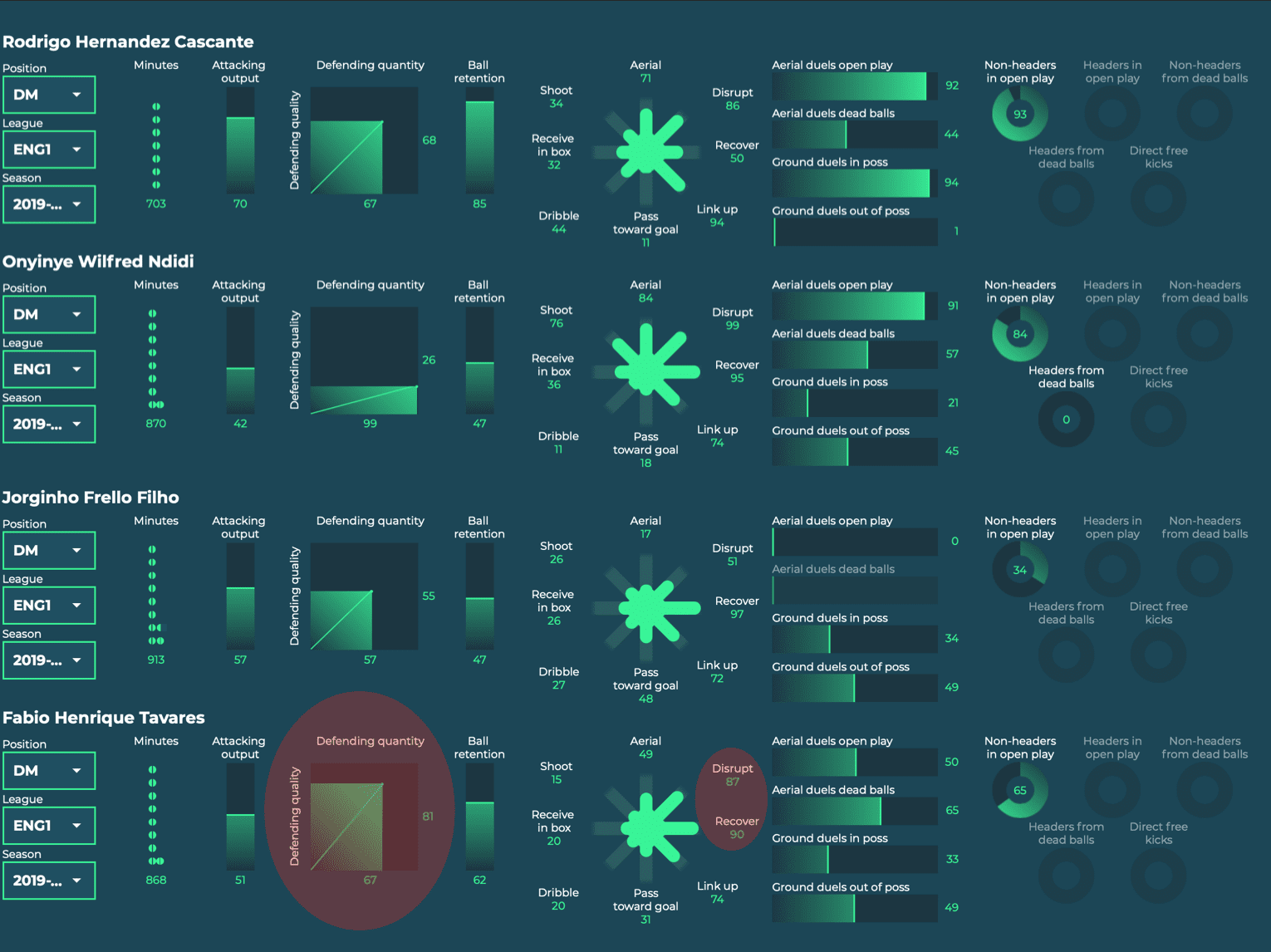
This is especially impressive when considering the fixture list Liverpool have had, being the only club that has played all of last season’s top six along with Leicester City (a team who will clearly be challenging for a European spot this year).
Fabinho plays a crucial role in allowing Liverpool’s full-backs to roam free. You don’t think of Liverpool without thinking of their full-back pair. Trent Alexander-Arnold and Andrew Robertson are continually going forward to help out the front three with creating chances. This can sometimes leave gaps in behind for attacking players to exploit. Fabinho can sometimes be the one to slot in their place, covering for them in case Liverpool need to transition to the defensive third quickly.
Even when Liverpool are in the defensive phase, he is usually on the side the opposition team have the ball, thus helping to double mark the opposition player with the full-back, or even triple mark with the full-back and centre-back.
Second ball magnet
Another aspect that makes Fabinho invaluable to this Liverpool side is his seamlessness to win back possession and recycle it quickly.
A significant aspect of Liverpool’s play in the final third is using their fullbacks and their front three to thread passes to one another, attempting to create clear chances for a goal. These passes, whether they be through passes, crosses, long balls, etc., it is a very high risk, high reward style of play. Sometimes, it can be easy for them to lose possession and allow the other team to start a dangerous counter-attack.
When Liverpool are in this setup, Fabinho will situate himself just in front of the halfway line.
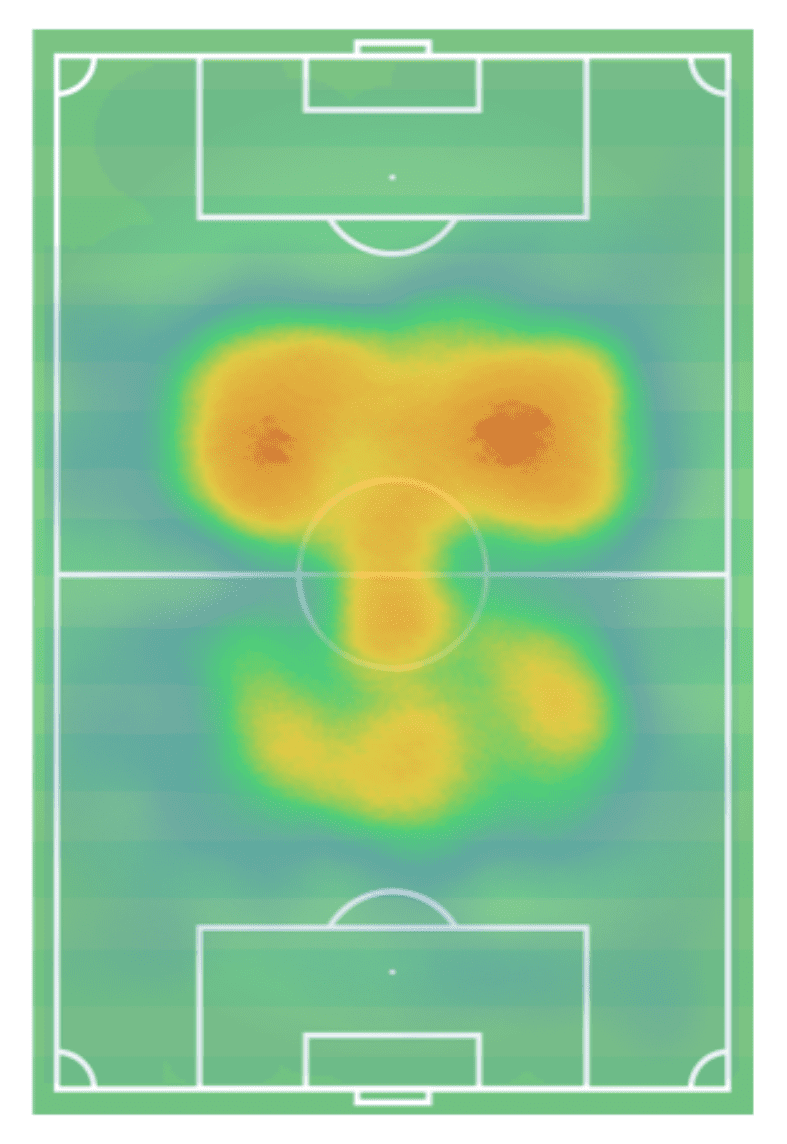
He is not there to only recycle possession from one side of the pitch to the other, but he is there to stop these counter-attacks.
A successful example of this is below in Liverpool’s home game against Genk in the Champions League.
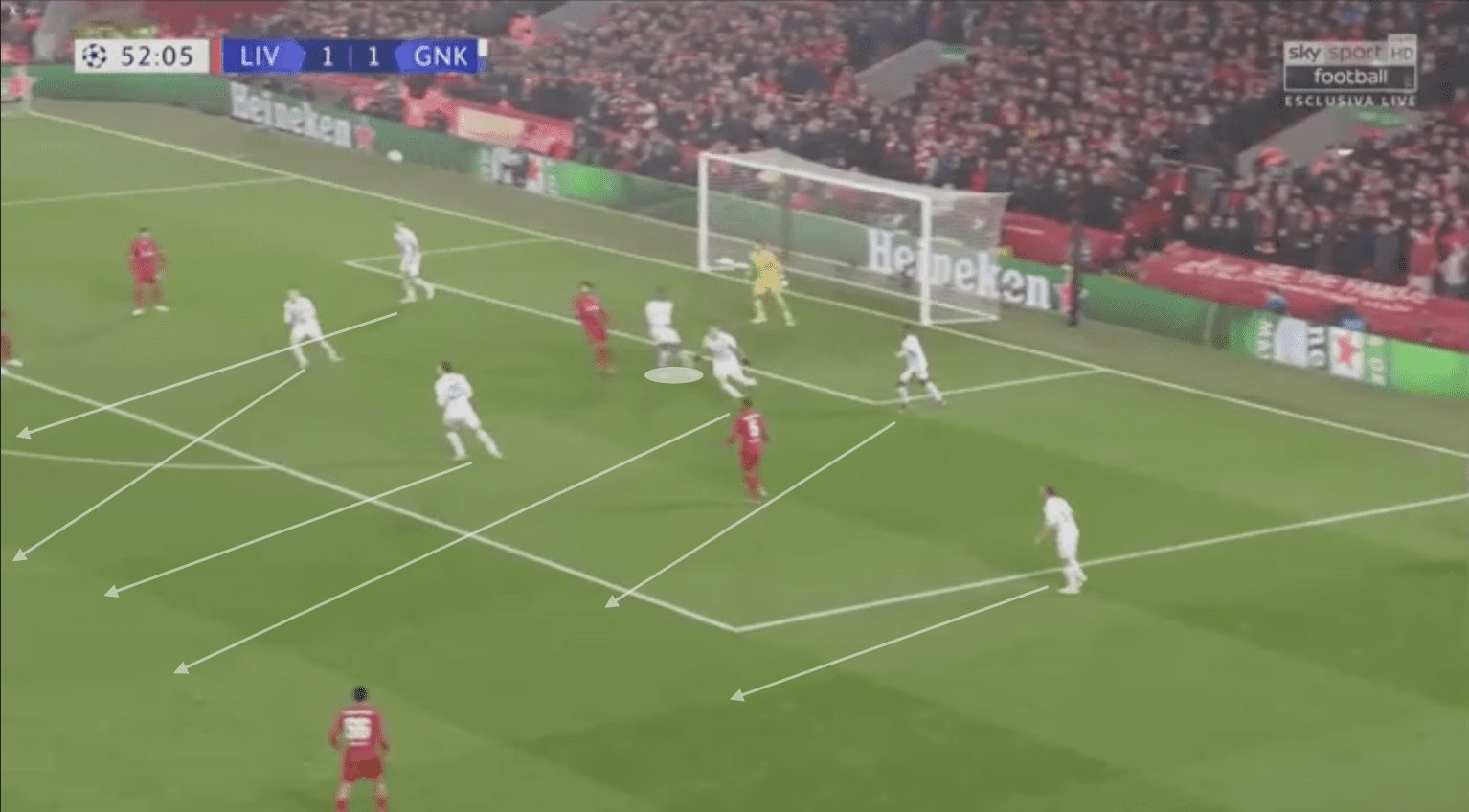
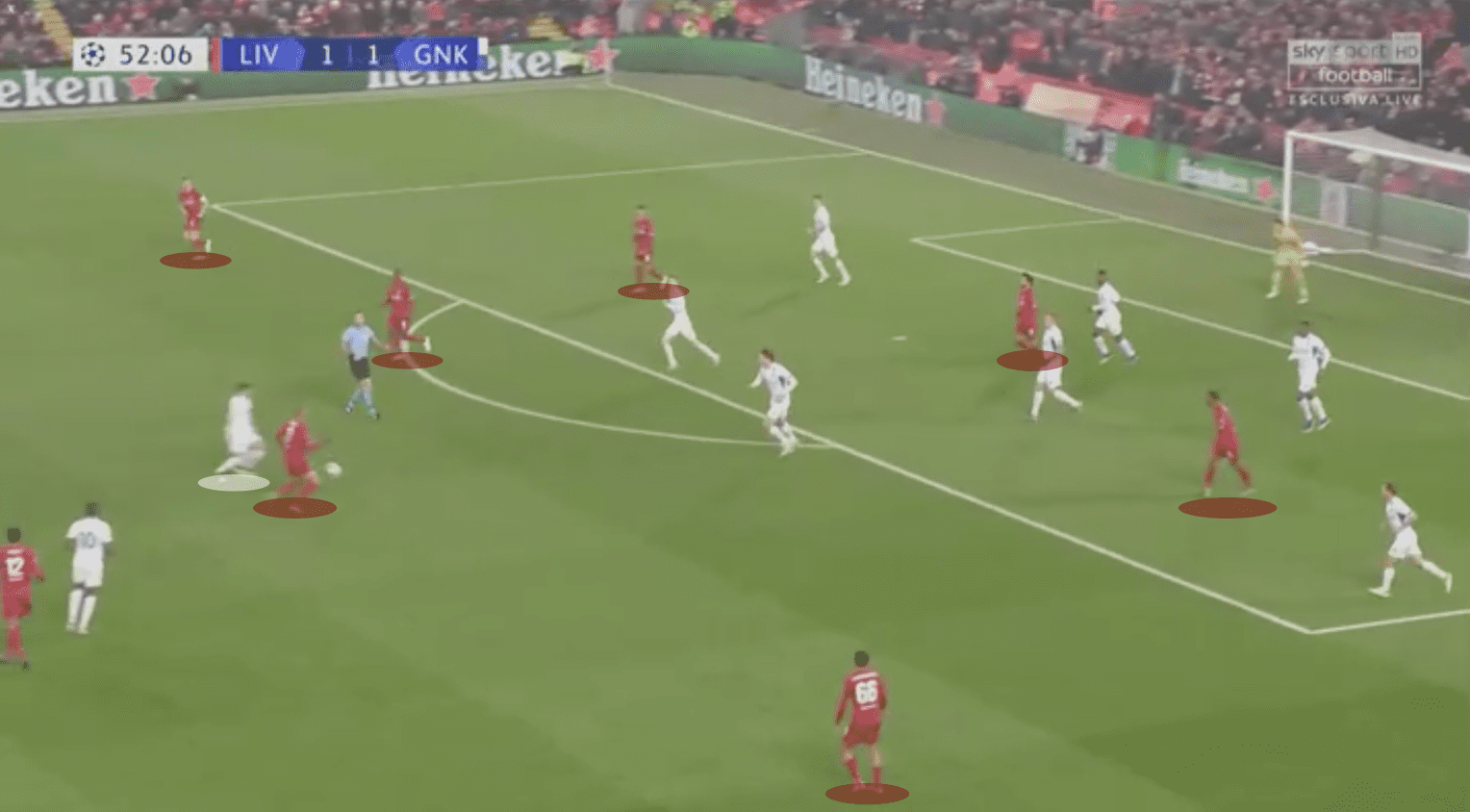
An unsuccessful example of this is below in Liverpool’s home game against Manchester City in the Premier League. Despite Fabinho being unable to win the second ball, him going into the challenge still benefits Liverpool. The pressure he adds on allows Liverpool’s defenders, and other midfielders those extra few moments to get back, and situate themselves defensively, rather than have the opposition counter-attack freely.
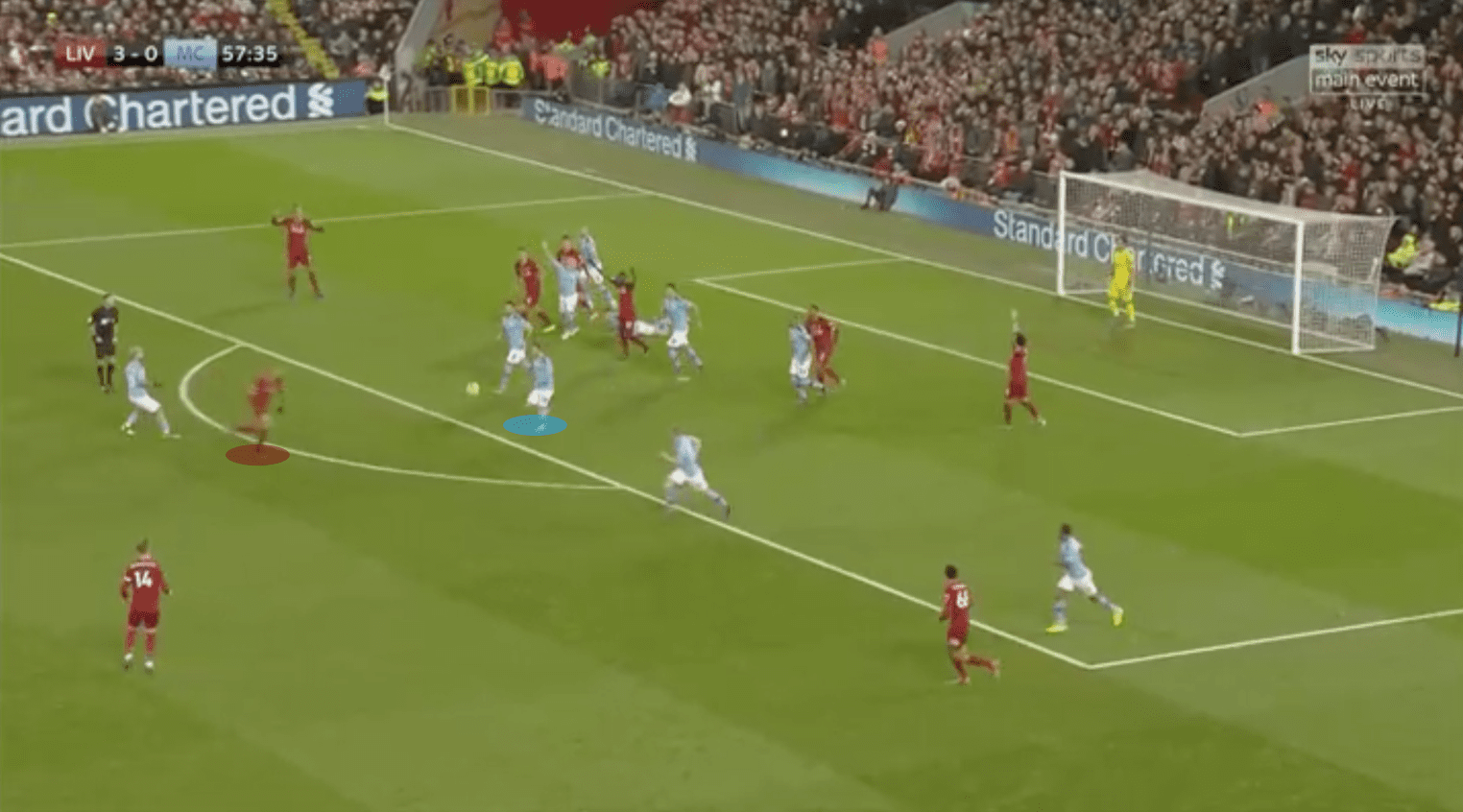
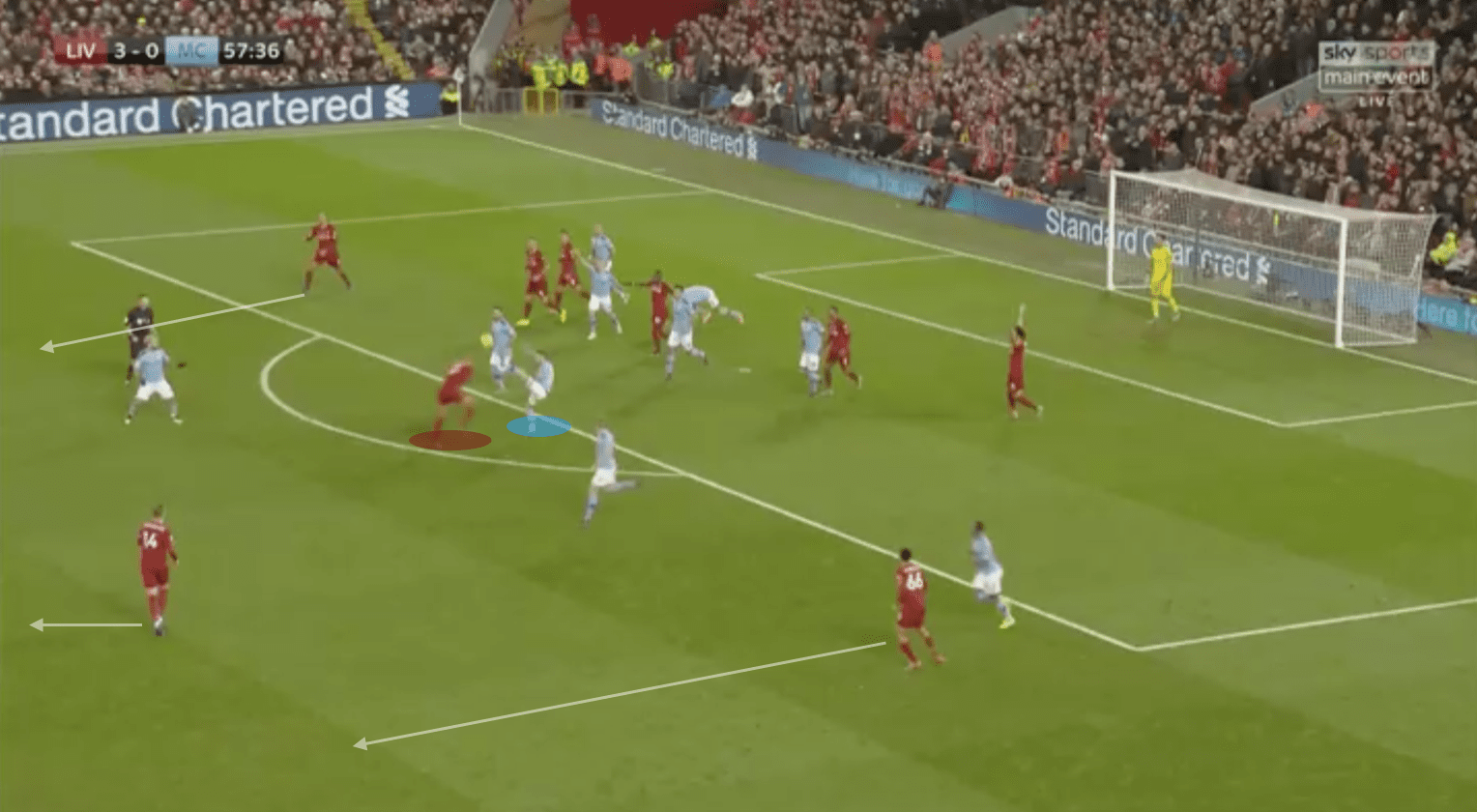
Versatility
What separates Fabinho from a good #6 to a great one is his versatility. He isn’t just a ‘destroyer’. His reading of the game, as well as his technical play, makes him really well rounded and different than a lot of other defensive midfielders.
With two assists, and a goal so far this season, his ability to read the game allows him to know when it is safe for him to move forward, knowing when it is not worth it to leave his defence line exposed.
Once he decides that it is safe to roam forward, he’ll attempt to trick the opposition. He’ll lure them into trying to close him down, this then results in gaps he can run into either with the ball at his feet, or once he makes the pass to a teammate.
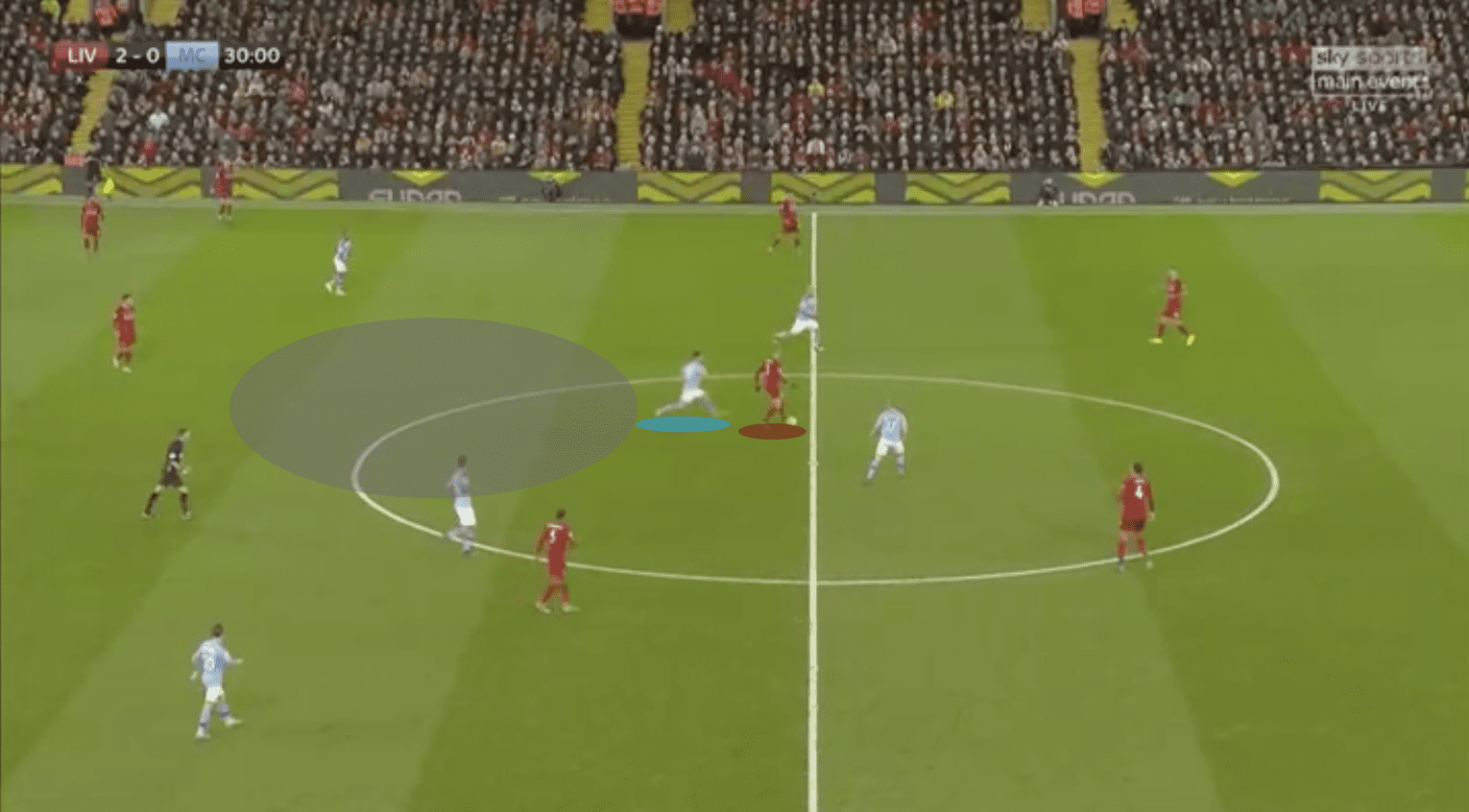
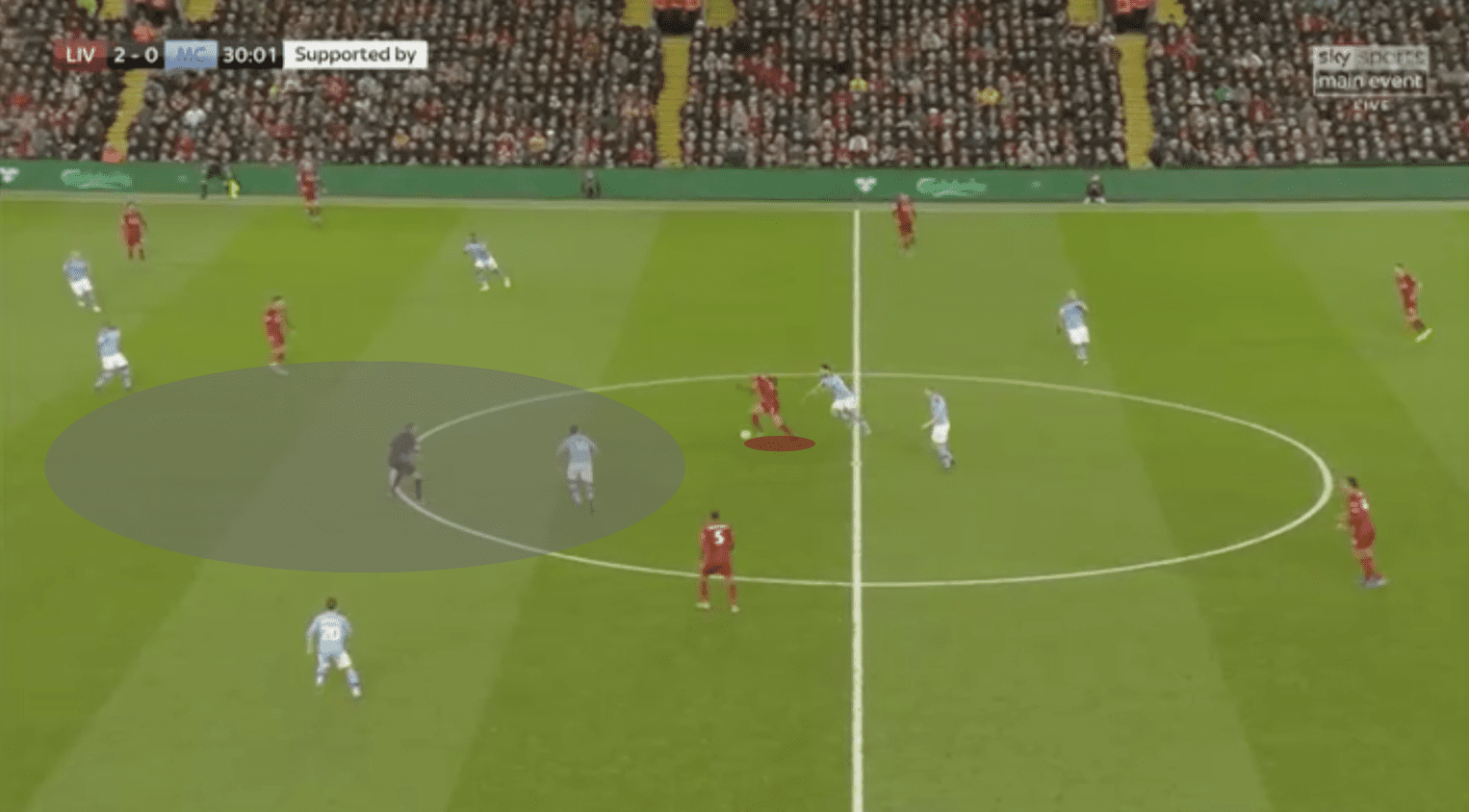
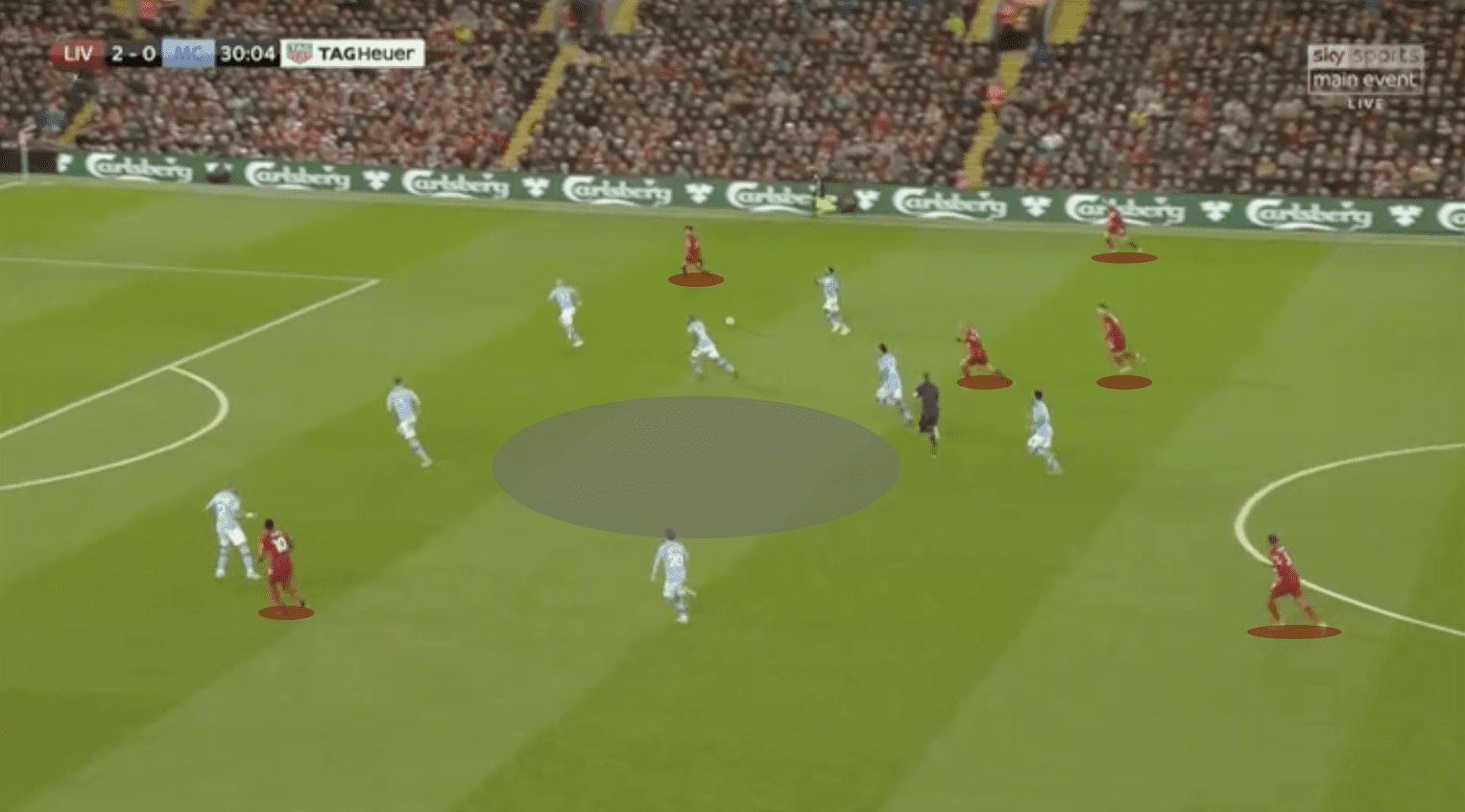
With an 83% pass accuracy to the final third, Fabinho is able to get key passes into his forward teammates. This versatility is so helpful to Klopp because with Fabinho carrying some weight creatively, it does not force another player to carry the responsibility all on his own.
Liverpool’s spine
Liverpool have a fantastic spine, and Fabinho is central to that. Javier Mascherano was the last player Liverpool had that could be compared to Fabinho in how he performs in his role. Mascherano departed from Mersyside in 2010 for Barcelona, and since then, Liverpool haven’t had a consistent, solid defensive midfielder. Lucas Leiva started making the role his own, but injuries plagued him, which saw him unfit for a manager to consistently rely on him.
Club legend and captain Steven Gerrard took over, moving back from his preferred position in central midfield. Though he did a sound job, he was never the ‘destroyer’ type. Instead, he became more of a deep-lying playmaker, taking the attributes that made him a great central midfielder and just adjusting them slightly. After Gerrard left the club, Jordan Henderson took over the role, again playing out of position. His adaptability, work ethic, and technical play did see him succeed for a few years before Fabinho’s arrival, but it was always clear that it was not his first choice position.
Eight years. Liverpool waited eight years after Mascherano left before addressing the hole in the #6 role. Fans may look back in the past, wondering why the gap wasn’t addressed sooner, but that isn’t relevant right now.
Where Liverpool lost the league last season is a discussion of much debate, that in the end, comes down to personal opinion; there is no right answer. One case can be made for the Red’s 2-1 defeat away to Machester City at the Etihad Stadium. Klopp opted not to start Fabinho, thinking that he still was not ready to start such a big game. Fabinho came on in the 57th minute, and Liverpool looked extremely more control of the game, both in defence and in attack.
It is still way too early to predict the outcome of Liverpool’s season. But now, they have a fully adapted and integrated Fabinho, which makes their chances of silverware infinitely higher.

If you love tactical analysis, then you’ll love the digital magazines from totalfootballanalysis.com – a guaranteed 100+ pages of pure tactical analysis covering topics from the Premier League, Serie A, La Liga, Bundesliga and many, many more. Buy your copy of the November issue for just ₤4.99 here






Comments